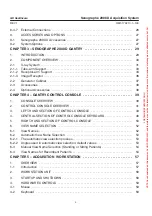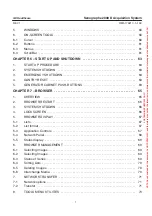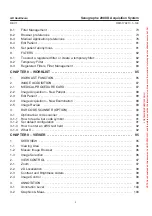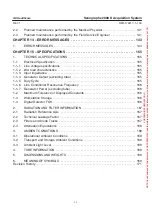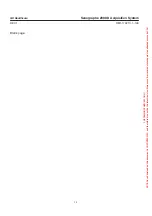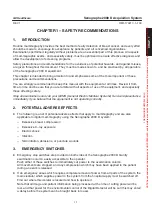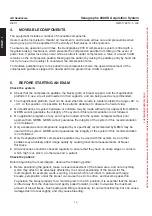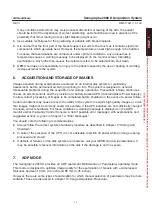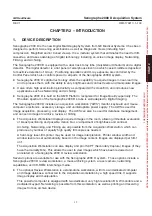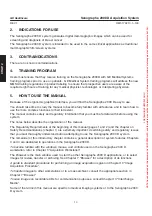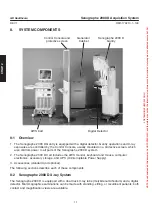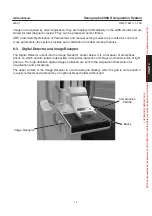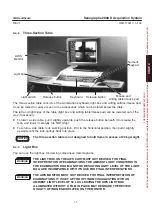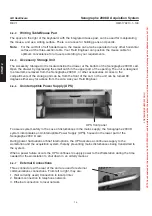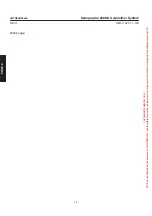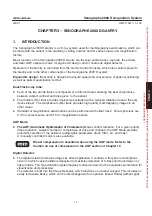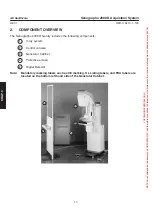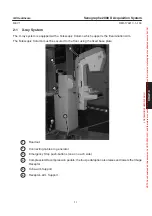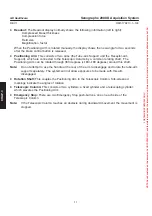
CHAP
. 1
GE Healthcare
Senographe 2000 D Acquisition System
REV 1
OM 5179217–1–100
17
If any condition exists which may cause unusual discomfort or tearing of the skin, the patient
should be told of the importance of correct positioning, and should be warned in advance of the
possibility that minor tearing and /or slight bleeding might occur.
D
Use suitable techniques for the positioning of patients with breast implants.
D
It is normal that the front part of the breast support is warm to the touch, as it contains electronic
components which generate heat. However, the temperature is never high enough to be harmful.
To ensure that examinations are carried out under optimum conditions, any unusual rise in
temperature causes a warning message to be displayed on the monitor screen, forbidding
examinations. Any further rise causes the detector system to be automatically shut down.
D
GEMS can take no responsibility for injury to the patient caused by the use of heating or warming
devices external to the system.
6.
ACQUISITION AND STORAGE OF IMAGES
Images acquired during examinations are stored on an internal disk system for preliminary
assessment, before permanent archiving or printing to film. The system is designed to avoid all
foreseeable problems during the acquisition and storage operations. Precautions include continuous
checks on all components and the provision of a battery-backed UPS (Uninterruptable Power Supply),
to allow correct processing of images to be completed before shutdown in the event of a power failure.
Certain conditions may cause a loss in the ability of the system to acquire high quality images or a risk
that images might not be correctly saved (for example, if the UPS batteries are not sufficiently charged
to ensure correct shutdown). For these conditions a warning message is displayed on the AWS
monitor and/or the Gantry Control Console. A list of possible error messages, with explanations and
suggested actions, is given in Chapter 14. “Error Messages”.
You should note the following recommendations:
D
Always follow the correct system shutdown procedure as described in Chapter 6 “Startup and
Shutdown”.
D
In spite of the presence of the UPS, it is not advisable to switch off power while an image is being
processed and stored.
D
If defects or failures on the disk system are observed,
call your GEMS Service representative
. It
may be possible to recover information on the disk if the damage is not too severe.
7.
AOP MODE
The Senographe 2000 D provides an AOP (Automatic Optimization of Parameters) operating mode.
This mode is designed to optimize image quality for the examination of breasts with a compressed
thickness between 10 mm (0.4 inch) and 85 mm (3.35 inches).
However, there are some types of examination for which manual selection of parameters may be more
suitable. These are discussed in Chapter 10, Image Acquisition Procedure.
FOR
TRAINING
PURPOSES
ONLY!
NOTE:
Once
downloaded,
this
document
is
UNCONTROLLED,
and
therefore
may
not
be
the
latest
revision.
Always
confirm
revision
status
against
a
validated
source
(ie
CDL).




